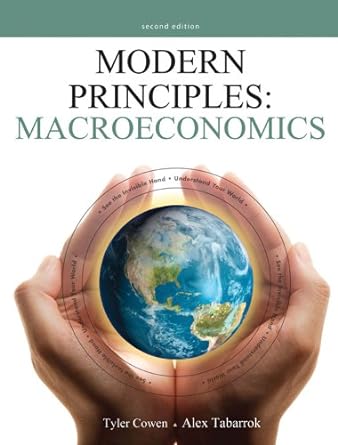1.1. By U.S. law, your employer pays half of the payroll tax and you, the worker pay...
Question:
1.1. By U.S. law, your employer pays half of the payroll tax and you, the worker pay the other half We mentioned that according to the basic of supply and demand, the part of the tax paid by the employer i likely to cut the worker's take-home pay. Let's see why. We'll start off in a land without any payroll taxes and then see how adding payroll taxes (like FICA and Medicare) affects the worker's take-home pay.
a. Who is it that "supplies labor"? Is it workers or firms? And who demands labor? Workers or firms?
b. The chart below illustrates the pretax equilibrium. Mark the equilibrium wage and quantity oflabor in this market. In part
c, remember that this "wage" is the amount paid directly to workers.
Wage Supply of workers Demand for workers Quantity of workers
c. Suppose the government enacts a new payroll tax of 10% of worker wages, "paid" fully by employers. What will happen to the typi cal firm's demand for labor? In other words, when firms learn that every time they hire a worker, they have to pay not only that worker' wage but al o 10% of that worker's wage to the government, will that increase or decrease their willingness to hire workers?
Mter you answer in words, also illustrate the hift in the graph above.
d. So, in the equilibrium with a new fully employer-paid payroll tax, will worker's take-home wages be higher or lower than beforehand?
e. Imagine that most workers want full-time jobs to support their families whether the wage is high or low. What does this imply about the hape of the supply curve? Redo the analysis with the new supply curve and discuss the exact effect on wages of the payroll tax.
Step by Step Answer:







